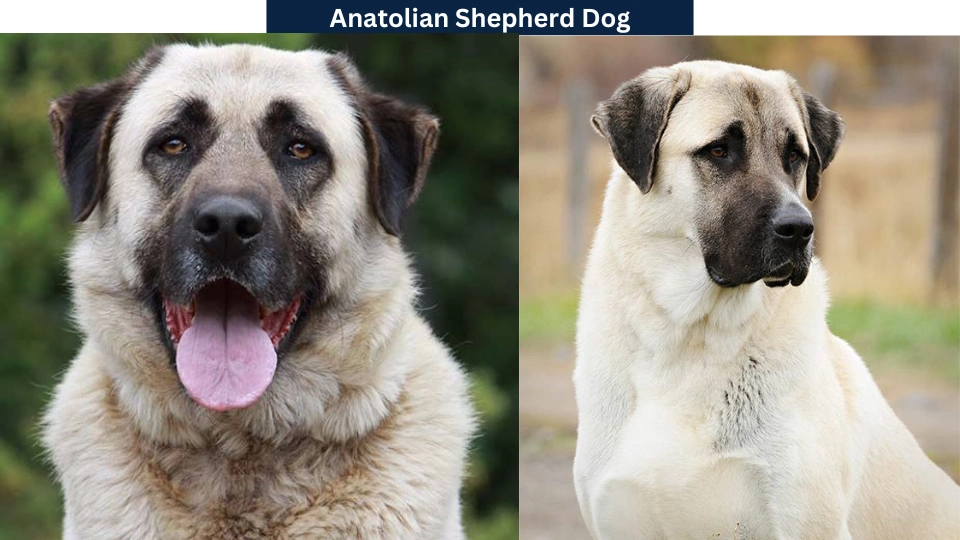Last Updated on March 3, 2024 by Aftab Tariq
The Anatolian Shepherd Dog is a robust and formidable breed with a rich history of guarding flocks. Known for their size, intelligence, and unwavering loyalty, these dogs excel as working guard dogs.
Standing between 27 and 29 inches tall and weighing up to 150 pounds, they possess impressive strength and agility, making them well-suited to their role in protecting livestock from predators and navigating challenging terrain.
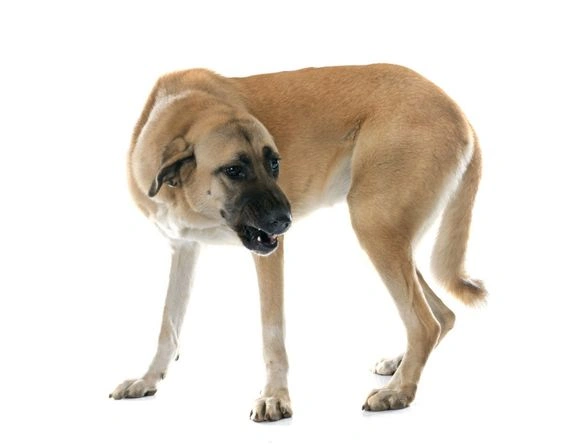
Anatolian Shepherd Dogs trace their ancestry back thousands of years to the Bronze Age, around 6,000 years ago. This lineage connects them to some of the oldest documented domestic-canine bloodlines, giving them a sense of timeless heritage.
Despite their imposing stature, Anatolian Shepherd Dogs are known for their intelligence, devotion, and adaptability. They are fiercely protective of their charges, whether it be livestock, children, or other pets.
“Anatolian Shepherd Dogs show strong loyalty and bravery, just like the old places they watch over.”
However, owning an Anatolian Shepherd Dog requires strong leadership to manage their assertive nature alongside their affectionate and composed demeanor.
History and Origins of Anatolian Shepherd Dog
The Anatolian shepherd dog comes from ancient times and has its roots in mastiff breeds and guardian dogs from the Middle East.
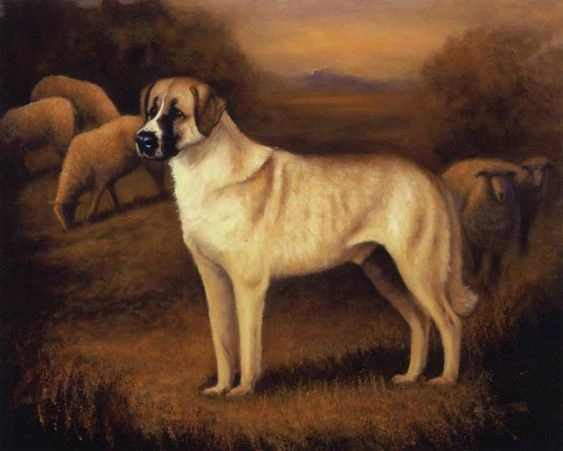
These dogs are really big and strong, and they were specifically bred to protect sheep and goats from dangerous animals like bears, wolves, and even people who tried to steal them.
They’re known as the original guard dogs for livestock in Turkey. Even today, you can find them working alongside nomads who move around to find food and other things they need.
This movement of people and animals, called “transhumance,” has helped spread the genes of these dogs to different parts of the world.
The first Anatolian shepherd dogs came to the UK in 1965. Even though more of them have been brought to the UK since then, they’re still not very common in the country.
Anatolian Shepherd Personality
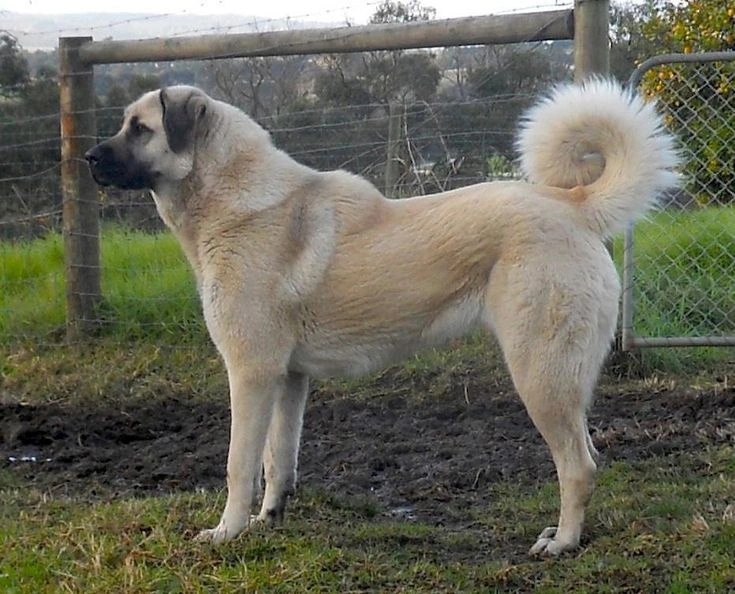
The Anatolian shepherd mix is friendly but remains cautious around strangers, reacting swiftly to potential dangers. Bred for guarding livestock, they think independently, often making decisions on their own. This can pose challenges in a home environment, requiring careful handling.
The Anatolian Shepherd breed arrived in the UK in 1965, but despite further introductions, it remains uncommon in the country.
Anatolian Shepherd Grooming
The Anatolian shepherd dog is made for outdoor work, so it has a thick undercoat that keeps it safe from the weather. Some Anatolians have long fur on the outside, but most have short fur.
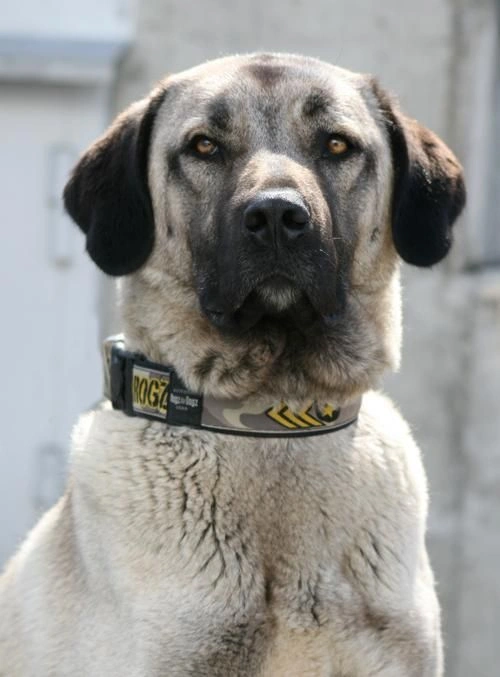
A simple brushing once a week will help keep their coat neat. However, they shed their undercoat twice a year. During this time, it’s important to brush them thoroughly to remove the loose hair.
This might need to be done every few days with a short-bristle brush and sometimes a comb too. Like all dogs, Anatolian shepherd dogs need their nails trimmed regularly to keep them at a good length. Anatolian Shepherd colors vary, encompassing fawn, brindle, and white coats.
Anatolian Shepherd Nutrition
The Anatolian shepherd dog should be fed good-quality dog food, whether it’s bought from a store or prepared at home with advice from your vet.
Ensure the food aligns with your Anatolian Shepherd Dog puppy’s age, whether it’s a puppy, adult, or senior. Anatolian Shepherd Dog puppies typically don’t eat too much. Treats can be helpful for training, but giving too many can make them overweight.
It’s important to know which human foods are safe for dogs and which aren’t. If you’re concerned about managing your Anatolian Shepherd Dog weight or diet, consult your vet. Keep clean, fresh water available for your dog at all times.
Anatolian Shepherd Health
The Anatolian shepherd dog is usually healthy and strong. They don’t often have hip dysplasia, which is a problem with their hip joints.
They also don’t usually get bloat, which is when their stomach twists and can be very dangerous. But it’s important for owners to know the signs of bloat so they can act fast if it happens.
Sometimes, the Anatolian shepherd dog might be sensitive to anesthesia, so it’s good for the vet to know this before doing any surgeries.
Responsible breeders will check for entropion, a condition where the eyelids turn inward, and they can fix it with surgery if needed. Owners should also check their Anatolian shepherd dog’s ears regularly for any signs of infection, and it’s a good idea to brush their teeth often.
Health Tests
- Hip Evaluation
- Elbow Evaluation
Anatolian Shepherd Exercise
The Anatolian shepherd dog doesn’t need too much exercise, so it’s content with spending time in a yard. Just make sure the yard has a tall, strong fence and a locked gate to keep it safe.
Taking it for a long walk once or twice a day is good too. But whenever you take an Anatolian shepherd dog out of the house, it’s important to keep it on a leash.
One breeder advises not to think they’ll stay obedient without a leash. Thinking they’ll behave without one could lead to trouble.
Anatolian Shepherd Training
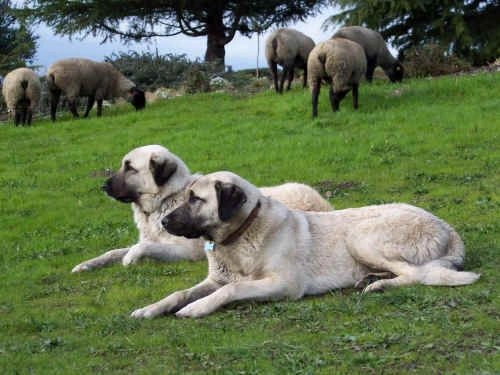
An Anatolian shepherd dog naturally tends to be cautious around strangers and has a protective instinct, so it’s important to socialize them when they’re puppies.
Training them to follow commands is very important too. Anatolian shepherd dogs were bred to work on their own, make their own choices, and keep their flock safe from intruders, so teaching them obedience can be tricky.
It’s crucial not to train an Anatolian shepherd dog for protection or guard duties under any circumstances.
Anatolian Shepherd Dog vs Kangal
The Anatolian Shepherd Dog and Kangal are Turkish breeds bred for livestock protection. Anatolian Shepherds are larger and known for their calm nature, while Kangals are slightly smaller but faster and more agile.
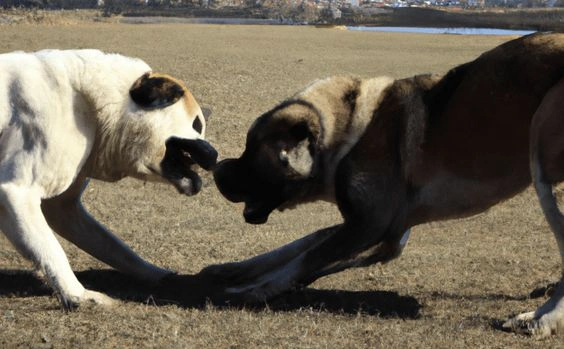
Anatolian Shepherds typically have longer coats compared to Kangals. Both breeds excel in guarding duties, displaying loyalty and intelligence.
Their differences lie in size, temperament, and coat length, with variations particularly notable in Anatolian Shepherd Dog size. Overall, both breeds are highly effective guardians with distinct but complementary characteristics.
Note: Explore Anatolian shepherd puppies for sale and welcome a devoted protector into your home. The Anatolian Shepherd Dog price varies depending on factors such as lineage, breeder reputation, location, and typically ranges from $1,000 to $2,500.
To discover more about pets, please check out our article on harpersatelier.
Frequently Asked Questions
What is the Anatolian Shepherd Dog Bite Force?
These dogs, called Anatolian Shepherds, have the strongest bite. They can deliver a whopping 743 pounds of force per square inch (PSI).
What Defines the Anatolian Shepherd Temperament?
Anatolian Shepherds are loyal, intelligent, and protective, with a cautious demeanor towards strangers.
How Intelligent are Anatolian Shepherds?
Anatolian Shepherds are clever, but their independent streak can make training tough. They learn basic commands well but need consistent, firm guidance.
Without strong leadership, managing them can be challenging. In terms of Anatolian Shepherd intelligence ranking, they are considered highly intelligent but may prioritize their own instincts over obedience.
Sources
I am a dedicated content writer with more than five years of experience, particularly skilled in the art of storytelling. My writing journey commenced during my college years, where I pursued journalism and unearthed my talent for creating captivating narratives.

